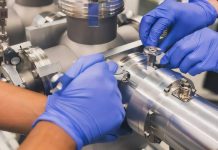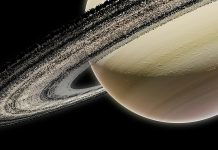
A dramatic event in our galaxy may be giving birth to new stars.
A recent study led by Ph.D. student Dilda Berdikhan from the Xinjiang Astronomical Observatory has revealed that a collision between two giant clouds of gas in the Milky Way likely triggered the formation of massive new stars.
The research focuses on a specific area in space called G013.313+0.193, or simply G013.313, and was published in the journal Astronomy & Astrophysics.
Stars are born inside massive clouds of gas and dust known as molecular clouds.
Sometimes, these clouds collide, and the impact can compress gas to such an extent that it kickstarts the process of star formation.
This new study provides strong evidence that such a collision has happened in G013.313, a region located along the Milky Way’s galactic plane.
Using two powerful telescopes in China—the NanShan 26-meter Radio Telescope and the Delingha 13.7-meter millimeter-wave telescope—the research team observed and mapped the area in detail.
They identified two separate clouds moving at different speeds, nicknamed G013.313-blue and G013.313-red based on their velocity differences.
Their shapes, seen as U-shaped and S-shaped patterns, along with a connecting “bridge” of gas in velocity space, point to a cloud–cloud collision.
The researchers estimate that this collision occurred between 350,000 and 1 million years ago. That timing matches the ages of young stars found in the same region, suggesting that the collision may have triggered their formation.
One of the most interesting outcomes of this collision is the creation of what’s known as a hub-filament system.
This structure looks like several filaments of gas funneling into a central hub of denser material. These kinds of formations are thought to be perfect environments for forming large numbers of massive stars.
In this region, the scientists found 21 dense clumps of gas and 94 young stars, known as young stellar objects or YSOs. This confirms that G013.313 is currently an active star-forming area.
This discovery not only adds to the growing evidence that cloud–cloud collisions are key triggers of star formation but also shows how these events shape the structure of star-forming regions.
By understanding what’s happening in G013.313, astronomers can better understand how stars—including some of the most massive ones in our galaxy—are born.
The study offers a rare and valuable glimpse into the powerful forces that shape our Milky Way and light up the galaxy with new stars.



